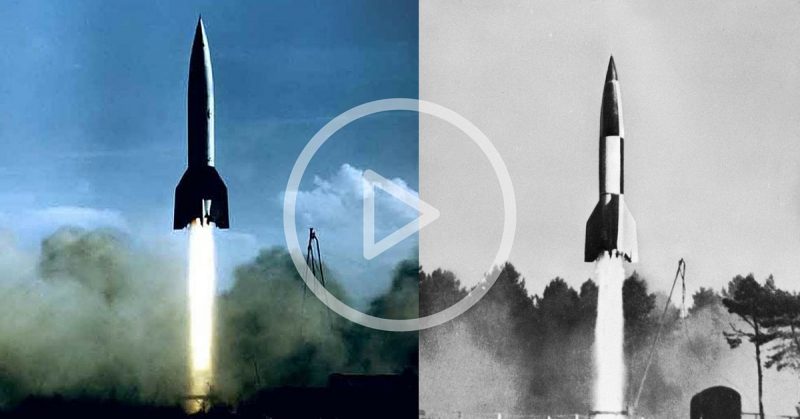The V-2 rockets were the first ever successful long-range guided ballistic missiles. In a lack of effective long-range strategic bombers, the Nazis turned to constructing something far more revolutionary. The rockets were called the Retaliatory Weapons, or in German Vergeltungswaffen, hence the abbreviation: V.
The name referred to the revenge against the Allied bombings of German cities. Their designated code-name was Aggregat-4, or simply A-4. The V-2 rockets were the advanced versions of their predecessor, V-1.
While the V-1 terrorized London with a buzzing sound before it would reach the ground, the V-2 accomplished supersonic speed, which meant that the rocket produced no sound at all, fueling the psychological effect on the English population. The V-2 rocket was also too fast to be shot down, reaching London, 200 miles away, in 5 minutes.
This was the top secret game changer of the war, but, luckily, it arrived too late. When the technology was initially introduced in June 1944, the Allies had already begun the liberation of France. The V-2 offensive ended in March 1945, leaving 9,000 civilian and military casualties. Many more lives were lost in the concentration camps which provided the workforce for the production of the rockets.
After the war, a race began between the Allies and the Soviet Union to capture valuable data and scientific personnel who were in any way involved with the V rockets program. Wernher von Braun, the inventor of the V-2 rocket, and over 100 key V-2 personnel surrendered to the Americans. During their quest, the Allies managed to retrieve spare parts for the rockets, from which they reconstructed the original design. In the following years, the Americans managed to adapt and further develop the technology patented by the Third Reich.
In this video, filmed in 1947 in the White Sands Proving Grounds in New Mexico, we can see the assembly process and the launching of the missile.
